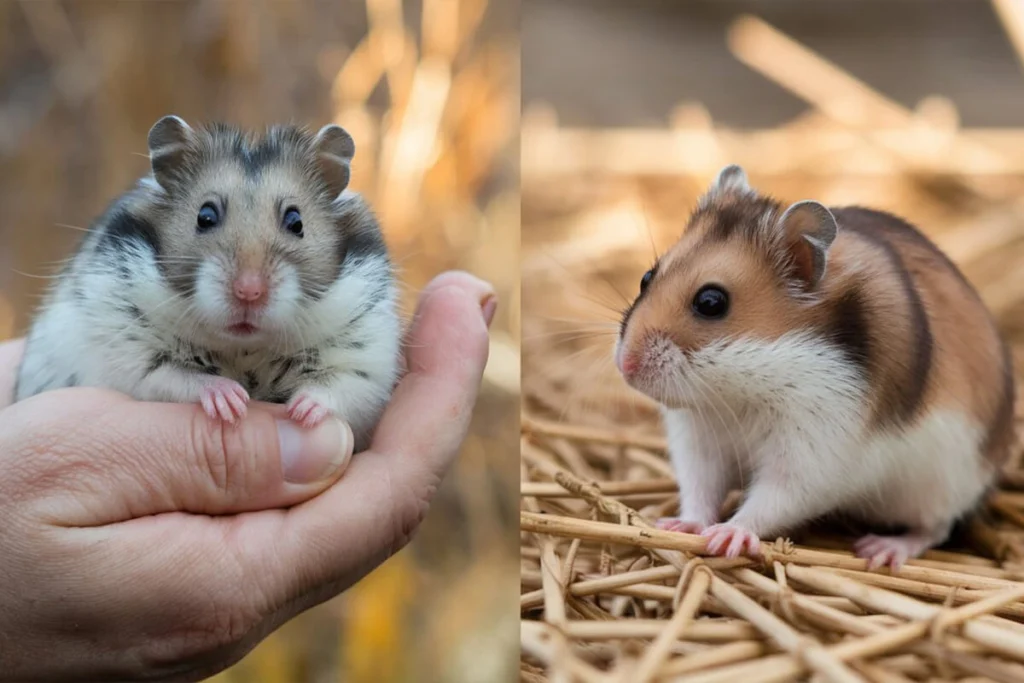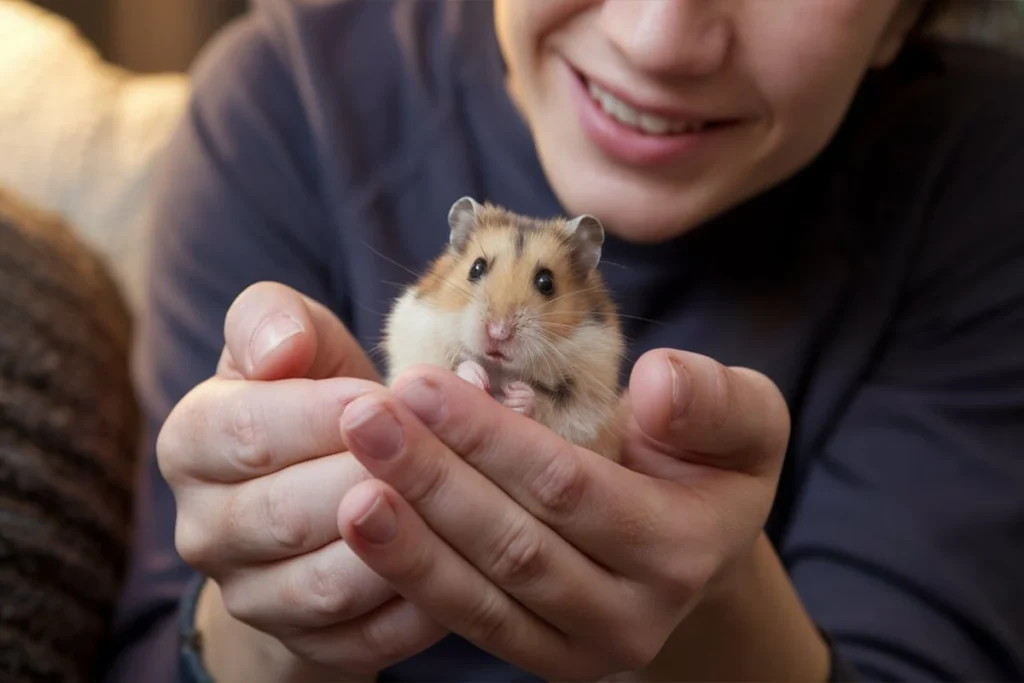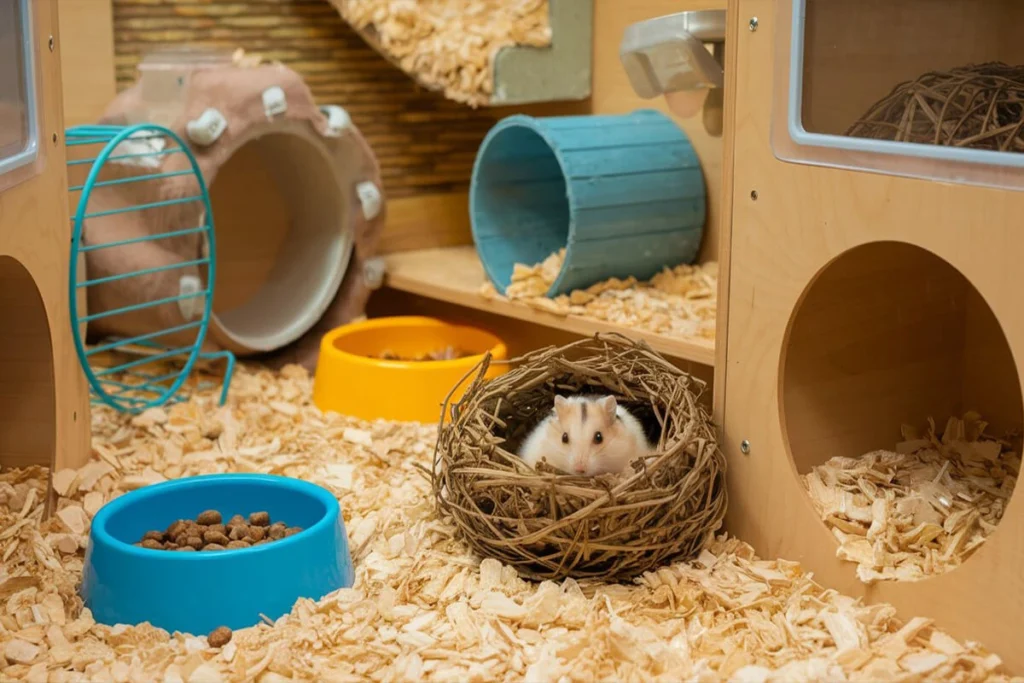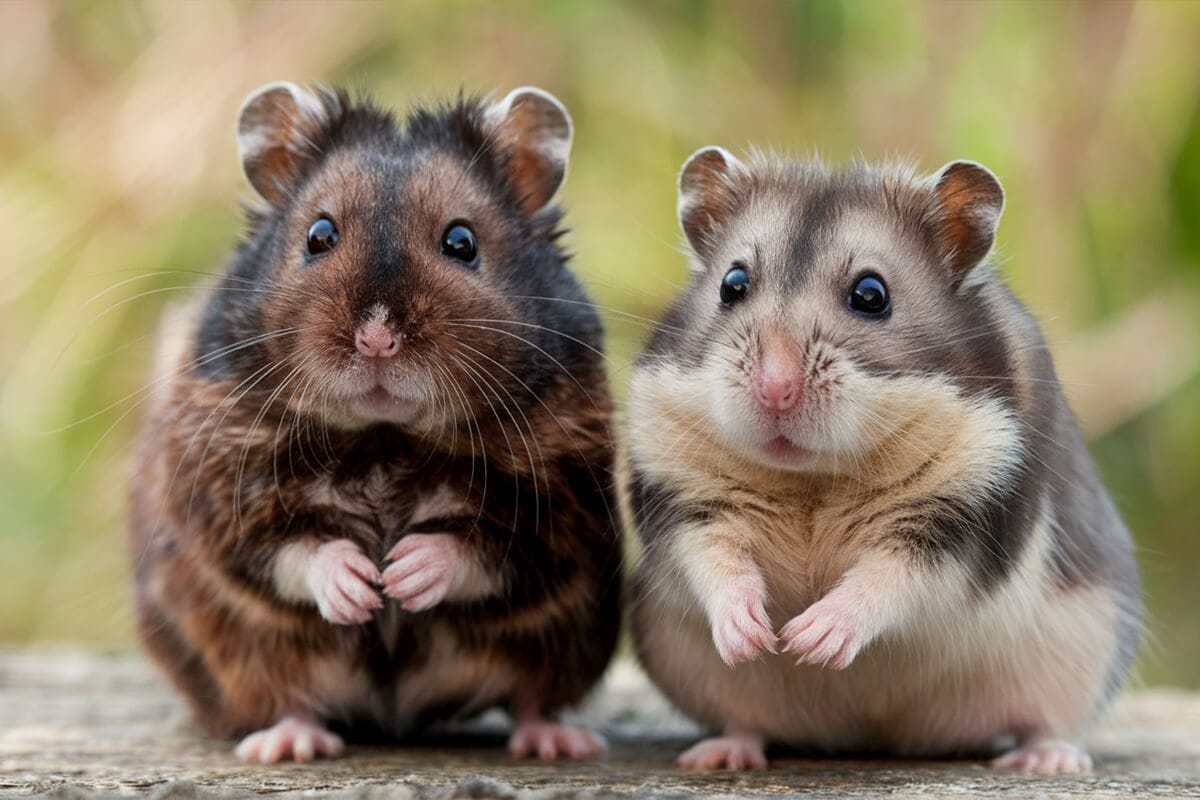Chinese Dwarf Hamster Male vs Female—what’s the difference, and which one should you choose? If you’re planning to bring home a Chinese Dwarf Hamster, understanding the key differences between males and females will help you make an informed decision. While both genders share similar care needs, they have unique physical traits, personalities, and behaviors that can influence your experience as a pet owner.
Choosing the right hamster depends on factors like temperament, ease of handling, and compatibility with other hamsters. Some owners prefer males for their calmer nature, while others find females more active and engaging. Whether you’re a beginner or an experienced hamster owner, knowing these gender-based differences will help you create a better habitat and care routine for your pet.
In this guide, experts break down the top five key tips to help you compare Chinese Dwarf Hamster males and females. You’ll learn how to identify their gender, understand their behaviors, and choose the best fit for your home. Let’s explore these essential insights and make sure you’re prepared to welcome the perfect furry companion!
Physical Differences Between Male and Female Chinese Dwarf Hamsters
Size & Body Shape
Male and female Chinese Dwarf Hamsters have noticeable differences in size and body structure. Males tend to have a slightly longer and more slender body, while females appear shorter and more compact. This difference becomes more obvious as they mature, making it easier to identify their gender. Additionally, males often have a more tapered shape toward the back, whereas females look rounder and stockier.
When handling them, you might feel that males have a leaner frame, whereas females feel more solid in your hand. However, diet and genetics can also influence their size, so always compare multiple features before making a final gender determination.
Scent Glands & Markings
One of the most reliable ways to differentiate males from females is by checking their scent glands. Male Chinese Dwarf Hamsters have a more prominent scent gland located on their abdomen, which appears as a small yellowish or slightly greasy spot. They use this gland to mark their territory by rubbing against surfaces in their enclosure. This marking behavior becomes more frequent if they sense another hamster nearby.
Females also have scent glands, but theirs are less visible and do not produce as much scent. Because of this, female hamsters tend to have a milder odor compared to males. If you notice a hamster frequently rubbing its belly on the cage floor or objects, it’s likely a male.
Tail & Genital Distance
Checking the distance between the tail and the genitals provides another accurate way to determine a Chinese Dwarf Hamster’s gender. Males have a noticeably larger gap between the anus and the genital opening, whereas females have a much shorter distance. This method works best when gently holding the hamster on its back or lifting its tail slightly while ensuring the hamster remains calm.
In addition to the spacing, male hamsters develop slightly more noticeable testicles as they grow older, which can help confirm their gender. Females, on the other hand, have a more uniform underside without any significant bulges. If you’re unsure, comparing multiple hamsters side by side can make these differences easier to recognize.
Behavioral Differences: Male vs. Female Hamster Personality Traits
Temperament & Social Behavior
Male and female Chinese Dwarf Hamsters display distinct temperament traits, which can influence how they interact with owners and other hamsters. Males usually have a more relaxed and friendly personality, making them easier to handle, especially for beginners. They tolerate human interaction better and often enjoy being gently held after gaining trust.

Females, on the other hand, tend to have a more independent nature. While some females develop strong bonds with their owners, they often prefer exploring their enclosure rather than being handled frequently. If you want a hamster that enjoys interaction, a male may be the better choice. However, if you prefer an active pet that entertains itself, a female might be more suitable.
Aggression & Territorial Nature
Understanding aggression and territorial tendencies is crucial, especially if you plan to house multiple hamsters together. Male Chinese Dwarf Hamsters generally display less aggression toward their cage mates, making them more suitable for cohabitation. When introduced properly at a young age, some males can live peacefully together, though this still depends on their personalities.
Females, however, show stronger territorial instincts. They often engage in dominance behaviors, such as chasing or nipping, especially when housed with other females. Even if they tolerate a companion early on, conflicts may arise as they mature. If you want to avoid fights, consider housing females separately. Regardless of gender, always monitor interactions and provide plenty of space to minimize territorial disputes.
Activity Levels & Playfulness
Chinese Dwarf Hamster Male vs Female: Activity Levels & Playfulness
Chinese Dwarf Hamsters are naturally energetic pets, but their activity patterns vary depending on gender. Understanding these differences can help you choose the best hamster for your lifestyle.
Male Chinese Dwarf Hamsters generally have a more balanced and steady energy level throughout the day and night. They enjoy running on exercise wheels, exploring tunnels, and engaging with toys, but they rarely exhibit sudden bursts of hyperactivity. Their predictable behavior makes them easier to manage, especially for owners who prefer a pet with a consistent activity routine.
Female Chinese Dwarf Hamsters, on the other hand, are much more energetic and exhibit unpredictable play patterns. They often go through intense activity spurts where they rapidly dig, climb, and run around their enclosure before taking short rest periods. If you want a hamster that is constantly on the move and full of curiosity, a female will provide endless entertainment. However, if you prefer a calmer pet with a more balanced energy level, a male Chinese Dwarf Hamster may be the better choice.
Regardless of gender, Chinese Dwarf Hamsters need plenty of mental and physical stimulation to stay healthy and engaged. Females typically require more enrichment, such as tunnels, chew toys, and climbing structures, to satisfy their high activity levels. Providing a variety of toys and interactive elements in their habitat helps prevent boredom and reduces stress-related behaviors in both males and females.
Which Gender Is Best for Beginners?
Ease of Handling
Handling plays a major role in choosing between a male and female Chinese Dwarf Hamster, especially for beginners. Males tend to be more docile and tolerant of human interaction. They adapt to handling faster, allowing new owners to build trust with fewer difficulties. If you handle them gently and regularly, they will often stay calm in your hands without excessive squirming or biting.

Females, on the other hand, often display a more independent nature. They may tolerate handling but usually prefer exploring their enclosure rather than staying in a person’s hands. Some females become restless when picked up and may attempt to jump away. If you want a hamster that enjoys frequent interaction and handling, a male will likely be the better choice. However, if you prefer watching your pet rather than handling it often, a female might suit your lifestyle.
Compatibility with Other Hamsters
When considering multiple pets, understanding Chinese Dwarf Hamster male vs female compatibility is essential. Male Chinese Dwarf Hamsters generally have a higher chance of coexisting peacefully, especially if they grow up together from a young age. While occasional dominance behaviors may occur, well-matched Chinese Dwarf Hamster males can live in pairs or small groups without frequent fighting.
In contrast, female Chinese Dwarf Hamsters have stronger territorial instincts and often struggle to share space with other hamsters. Even if they initially tolerate a cage mate, conflicts tend to increase as they mature. In the Chinese Dwarf Hamster male vs female comparison, females are more likely to engage in aggressive behaviors such as chasing, nipping, and fighting over food or territory. To avoid serious conflicts, keeping female Chinese Dwarf Hamsters in separate enclosures is the safest option.
Regardless of gender, providing a spacious habitat with multiple hiding spots, food bowls, and exercise areas is crucial to minimizing territorial disputes. If fights break out, be prepared to separate your Chinese Dwarf Hamsters permanently.
Long-Term Commitment
Owning a Chinese Dwarf Hamster requires a commitment of up to two to three years, but gender differences can influence your long-term experience as a pet owner. Males generally maintain a stable and friendly personality throughout their lives, making them easier to care for consistently. Their predictable nature allows owners to establish a routine with minimal behavioral changes.
Females, in contrast, can become more territorial and energetic as they age. While they start off playful and curious, they may develop stronger dominance behaviors over time. Some females also experience hormonal shifts that affect mood and activity levels. If you want a hamster with a relatively consistent temperament, a male might be the better choice.
Both genders require proper nutrition, regular cleaning, and mental stimulation to ensure a healthy and happy life. Before bringing home a Chinese Dwarf Hamster, consider whether you prefer a low-maintenance, easygoing pet (male) or an independent, high-energy companion (female).
Ideal Hamster Habitat and Care Based on Gender
Cage Size & Setup
Providing a spacious and well-structured enclosure ensures that your Chinese Dwarf Hamster stays happy and healthy. While both males and females need ample space, females often require a slightly larger and more complex habitat due to their higher energy levels. They enjoy climbing, tunneling, and exploring every inch of their cage, so a setup with multiple levels, ramps, and hiding spots will keep them engaged.

Males tend to be more relaxed and spend more time resting in cozy areas. They still need a spacious cage but may not be as insistent on climbing or rearranging their environment as females. Regardless of gender, aim for a cage that provides at least 450 square inches of continuous floor space to allow natural movement and exercise. A barred cage with narrow spacing (no more than ½ inch) or a well-ventilated glass tank setup works best for housing Chinese Dwarf Hamsters.
Adding tunnels, exercise wheels (at least 8 inches in diameter), and chew toys helps meet their physical and mental stimulation needs. Males often appreciate a simpler, more stable layout, while females may prefer an environment that allows for frequent changes and rearrangements.
Bedding & Nesting Preferences
Chinese Dwarf Hamsters thrive when they have access to soft, absorbent bedding that allows them to burrow and nest. Males and females both enjoy deep bedding, but females often dig more frequently and build larger nests. Providing at least 6 inches of bedding encourages natural burrowing behaviors and reduces stress.
Females tend to be more particular about their nesting area and may rearrange their bedding multiple times. They often create elaborate tunnel systems and hidden sleeping spots, so offering additional shredded paper or soft hay can support their nesting instincts.
Males, on the other hand, prefer simple and cozy sleeping spaces. They usually pick one corner of the cage to create a comfortable nest and rarely move it around. Placing a small hideout or nesting box in their preferred sleeping area helps them feel secure.
Both genders benefit from unscented paper-based or aspen bedding. Avoid cedar or pine shavings since they release strong fumes that can harm your hamster’s respiratory system. Spot-clean their cage daily and replace bedding weekly to maintain a clean environment.
Diet & Nutritional Needs
Feeding your Chinese Dwarf Hamster a balanced diet supports their overall health and longevity. Both males and females require a mix of high-quality hamster pellets, fresh vegetables, and occasional protein sources like mealworms or boiled eggs. However, females tend to have a slightly higher metabolism due to their increased activity levels, meaning they may eat more frequently or snack on small portions throughout the day.
Males often show more consistent eating habits and may prefer to store food in their nests for later. Observing your hamster’s eating patterns helps ensure they receive proper nutrition without overeating or developing food hoarding habits.
Since Chinese Dwarf Hamsters are prone to diabetes, avoid sugary treats, including fruits, honey-based snacks, and yogurt drops. Stick to fiber-rich vegetables like broccoli, cucumbers, and leafy greens while limiting high-carb foods like corn or peas. Providing fresh water in a bottle or shallow dish ensures they stay hydrated.
By understanding these gender-specific preferences and needs, you can create a comfortable, stimulating, and well-balanced environment for your Chinese Dwarf Hamster, ensuring they thrive in their new home.
Expert Tips on Choosing Between a Male and Female Chinese Dwarf Hamster
Best Choice for Solo vs. Multiple Hamsters
Choosing between a male or female Chinese Dwarf Hamster depends on whether you plan to keep a single pet or house multiple hamsters together. If you want a hamster that thrives alone and enjoys independent playtime, a female may be the better option. Female Chinese Dwarf Hamsters tend to have strong territorial instincts and usually prefer living alone. Even when raised with siblings, many females start displaying dominance behaviors as they mature, leading to fights and stress.

Males, on the other hand, have a better chance of coexisting peacefully with other males if introduced properly at a young age. While not all males tolerate cage mates, some can live together in pairs or small groups if they have enough space and resources. However, even bonded males may develop territorial disputes over time, so always monitor their interactions. If fights break out or one hamster starts bullying the other, separating them into individual enclosures becomes necessary.
Regardless of gender, never house male and female Chinese Dwarf Hamsters together unless you intend to breed them. They will reproduce quickly, and unexpected litters can become overwhelming for inexperienced owners. If you want to keep multiple hamsters, always provide separate enclosures to ensure their safety and well-being.
Signs of Stress & How to Manage It
Recognizing stress in your Chinese Dwarf Hamster helps prevent health and behavioral issues. Males and females may exhibit stress differently, so understanding their body language and habits will help you create a comfortable environment for them.
Common signs of stress in both genders include:
- Excessive grooming or scratching
- Loss of appetite or hoarding food excessively
- Frequent hiding or refusing to explore
- Biting the cage bars or attempting to escape
- Sudden aggression or defensive posturing
Females often display restlessness and hyperactivity when stressed, running excessively on their wheels or digging frantically. Providing more hiding spots, chew toys, and a well-structured environment helps them feel more secure.
Males, in contrast, may become withdrawn when stressed. They might spend more time in their nest, avoid interaction, or show a lack of interest in playtime. If your male hamster appears sluggish or less engaged, try introducing new toys, adjusting the cage setup, or interacting with him more frequently to rebuild trust.
To reduce stress, always maintain a consistent routine for feeding, cleaning, and handling. Avoid loud noises and sudden movements around their enclosure, and make sure they have enough space to move around freely. A well-balanced diet and a clean, enriched habitat will also support their overall well-being.
Final Recommendation from Experts
Experts recommend choosing a Chinese Dwarf Hamster based on your lifestyle, experience level, and personal preferences. If you are a beginner or prefer a hamster that enjoys handling and social interaction, a male will likely be the best choice. Males tend to be more relaxed, adaptable, and easier to bond with, making them ideal for first-time hamster owners.
If you want a highly active and independent hamster that loves exploring its habitat but may not enjoy frequent handling, a female could be a great match. While females can be more energetic and entertaining, they may also require more space, mental stimulation, and patience when it comes to taming.
For those considering multiple hamsters, males generally have a higher chance of cohabiting peacefully, while females usually do best when housed alone. Regardless of which gender you choose, providing proper care, attention, and a well-designed habitat will ensure your Chinese Dwarf Hamster thrives in its new home.
By understanding these key gender differences and expert insights, you can confidently choose the right hamster that fits your personality and lifestyle, making pet ownership a fun and rewarding experience.
Conclusion
Deciding between a Chinese Dwarf Hamster Male vs Female depends on your lifestyle, experience level, and expectations as a pet owner. Both genders have distinct traits that affect their behavior, social tendencies, and ease of care. Understanding these differences will help you choose the best hamster for your needs.
Males tend to be more docile, friendly, and easier to handle, making them a great choice for beginners. If you want a hamster that enjoys interaction and adapts well to handling, a male Chinese Dwarf Hamster is likely the better option. Additionally, males have a slightly higher chance of coexisting with other hamsters, though conflicts can still arise.
Females, on the other hand, are more energetic and independent. If you prefer a highly active pet that loves exploring its habitat rather than being handled frequently, a female Chinese Dwarf Hamster may be a better fit. However, females are generally more territorial and may not get along with cage mates, making them better suited for solo housing.
Regardless of whether you choose a Chinese Dwarf Hamster Male vs Female, both require a spacious cage, a nutritious diet, and mental stimulation to stay happy and healthy. Proper care and an enriched environment will ensure a rewarding pet ownership experience.
By understanding these gender-specific traits, you can confidently choose the best hamster for your home. Whether you prefer the calm and social nature of a male or the playful independence of a female, owning a Chinese Dwarf Hamster can bring joy and companionship when given the right care.
Read More About the Chinese Dwarf Hamster Here.
Choose The Best Name For your Lovely Hamster from our Top 100 Names HERE!
Discover More about Furry Pets From HERE!
Find Some Good stuff for your Pet On Pet MD Official
